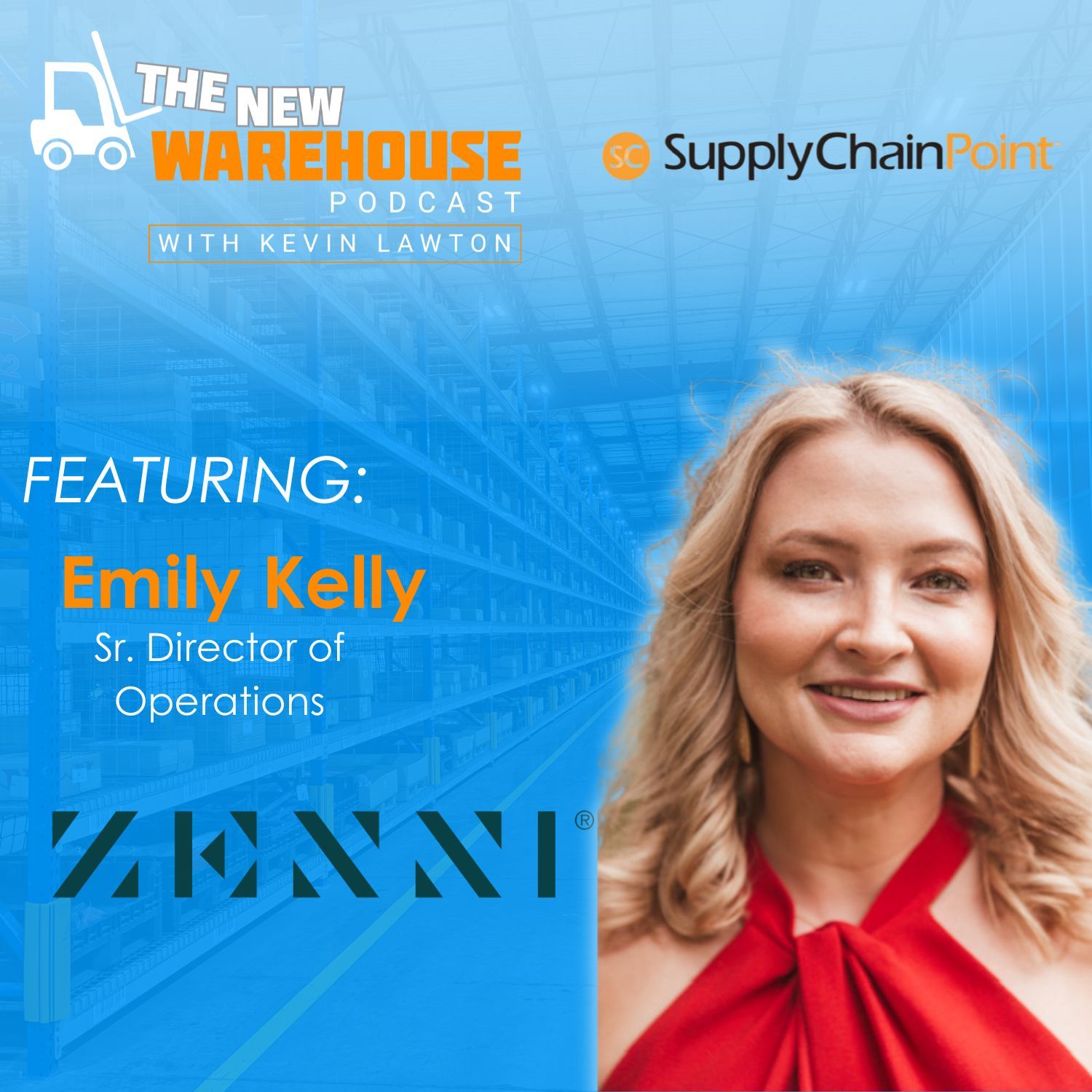
Supply Chain Point: How Zenni Optical Manages Glasses, Contacts, and Global Chaos
Kevin chats with Emily Kelly, Senior Director of Operations at Zenni Optical, during this special Supply Chain Point edition of The New Warehouse Podcast. Known for its affordable eyewear and direct-to-consumer model, Zenni has evolved over its 22-year history to now include a growing contact lens business.
Emily shares how Zenni is balancing innovation and stability in a volatile global logistics environment, especially as they manage a dual-channel supply chain for both glasses and contacts. From navigating small parcel carrier shakeups to handling tariffs on imported frames, she offers clear, practical insight into how Zenni stays nimble while staying true to its brand promise.
Building a Dual Supply Chain: Frames vs. Contacts
Running operations for glasses is already a balancing act, but adding contact lenses created a second supply chain with its own rules and risks. For glasses, Zenni controls its manufacturing in China and finishes many products at domestic facilities in Ohio and the Bay Area. Contacts, however, involve a web of variables. From SKUs to prescription verifications, they are fulfilled through a distributor via drop shipping.
Emily explained, “Frames and contacts ship completely separate.” She added that contact lenses introduce a different level of complexity because, “There are so many skew possibilities because of the various brands and manufacturers and prescription parameters within contact lenses that we just drop ship those for the time being.”
Despite this, Zenni’s contact lens offering fits naturally into the customer lifecycle. While many e-commerce brands rush toward subscriptions, Zenni is cautious. “Subscriptions almost become a bad word lately…people are like, ‘Oh, I hate a subscription,’” Emily said. Instead, Zenni is exploring loyalty programs and price transparency to drive retention.
Tariffs, Nearshoring, and Cost Control Amid Global Volatility
With eyewear frames sourced primarily from China, Zenni faces the reality of tariffs head-on. While contact lenses have been spared, for now, Emily acknowledged that tariff volatility is forcing long-term strategic thinking. “There have been a lot of people losing sleep,” she said, noting that cost increases to consumers would be a “last resort.”
Zenni is actively exploring solutions, such as cost controls in other parts of the business, and is also investigating nearshoring options. Emily emphasized the need for risk diversification: “If you can de-risk from China, de-risk from having just one source in general.” Owning its supply chain has provided Zenni with some stability, but the team remains alert. “We’re following the news cycle… trying to predict the future a little bit.”
What is her best advice for other companies navigating similar challenges? Avoid putting all your eggs in one basket and prepare now for potential disruption later.
Small Parcel Shakeups and Carrier Diversification Strategies
Zenni’s eyewear is lightweight, which made small parcel shipping ideal until recent rate hikes and service shifts disrupted the model. Emily shared, “There’s really no set it and forget it with shipping carriers anymore.” Instead of relying on a single partner, Zenni is now actively building a diversified shipping network that includes regional carriers and alternative routing based on geography and population density.
With operations in both California and Ohio, Zenni is strategically positioned. “We’re fortunate to be large enough volume that we can potentially move some things around and still have a high enough volume to leverage some discounts,” Emily said.
She encouraged others to be proactive rather than reactive: “When you need [a carrier], it’s kind of too late to be talking to them.” Her advice? Build backup relationships and stay engaged with new providers, especially those emerging from events like Home Delivery World or Supply Chain Point.
Key Takeaways from Zenni Optical
- Zenni manages two parallel supply chains. One for frames and one for contact lenses, highlighting the need for tailored strategies when product types and fulfillment models diverge.
- Despite rising tariffs on imported frames, Zenni has maintained steady customer pricing by cutting costs elsewhere and actively exploring nearshoring as a long-term hedge.
- Rather than defaulting to subscriptions, Zenni builds customer retention through loyalty programs and smart add-ons, recognizing shifting consumer attitudes.
- With small parcel rates becoming unpredictable, Zenni is proactively diversifying its carrier mix, leveraging two domestic hubs to unlock regional delivery advantages.
Listen to the episode below and leave your thoughts in the comments.
Guest Information
For more information on Zenni Optical, click here
Connect on LinkedIn: Zenni Optical LinkedIn, Emily Kelly
For more stories like Zenni Optical, check out the podcasts below.
Supply Chain Point: Solving Logistics Challenges with Nish George
589: Military Logistics Lessons for Modern Supply Chains
587: Lucas Solutions on Startup Lessons, 3PL Strategy, and Relationship-Driven Growth
